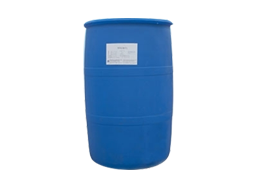When the oxide scale is removed from the surface of parts for strong corrosion, various harmful gases are generated in the corrosion process, and acid mist is generated when the gas escapes, which has a great impact on the environment and equipment. If a small amount of OP emulsifier is added to the pickling tank, a layer of foam can be generated on the surface of the pickling solution to prevent the acid mist from escaping.

When chromium plating, the current efficiency is very low (10% ~ 15%), and insoluble lead anode is used. After power on, a large amount of hydrogen and oxygen are generated at both poles, which is easy to produce harmful chromic acid smoke. Chromium fog not only pollutes the environment, endangers the health of operators, but also causes equipment corrosion. In order to inhibit the production of chromium fog, a small amount of perfluoroalkyl ether sulfonate surfactant can be added into the chromium plating bath. When the chromium plating is applied, a foam layer is formed on the surface of the solution, which can prevent the chromium mist from escaping, which ensures the health of the operator and reduces the consumption of chromic acid.
Before electroplating, the metal workpiece must be degreased and cleaned to make its surface clean. Otherwise, the deposition layer is poorly combined on the surface, and even the deposition layer cannot be obtained in serious cases. Typical degreasing fluid formula for carbon steel parts: sodium hydroxide 20 ~ 30g / L, trisodium phosphate 30 ~ 40g / L, sodium carbonate 30 ~ 40g / L, OP emulsifier 1 ~ 2G / L, 30 ~ 50 ℃.
The oil stains on the workpiece surface include animal, vegetable grease and mineral oil. Animal and vegetable oils can undergo saponification reaction in alkaline solution to form water-soluble soap and glycerol for removal; Mineral oil or other unsaponifiable oil can not be chemically decomposed by alkali, and can only be removed from the metal surface with the help of surfactant. In the process of oil removal, surfactant molecules are first adsorbed on the interface between oil and solution. Under the action of lipophilic and hydrophilic groups of surfactant, coupled with the convection and stirring of solution, the oil gradually separates from the metal surface and enters the solution as a very fine ball to form an emulsion. Of course, when using emulsifier to remove oil, the temperature of the solution should not be too high, otherwise the surfactant will produce salting out and lose its due role.
Electrodeposition in aqueous solution is an electrochemical reaction at the interface between metal and electrolyte. Therefore, the interface properties and the composition of electrolyte solution have a great influence on the electrodeposition process. As an additive in electroplating, surfactant plays an indispensable role in electroplating, whether ionic or non-ionic surfactant. The application of surfactant in electroplating is briefly described below.